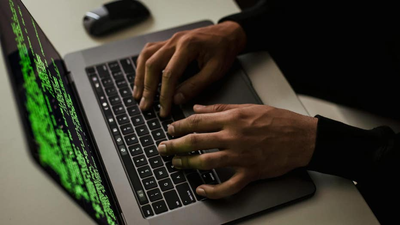
Data Breach Prevention: A Comprehensive Guide
The recent Landmark data breach has left many individuals vulnerable to identity theft and fraud. In this article, we will provide a comprehensive guide on how to protect yourself from such threats.
Monitoring Your Accounts
Keeping an eye on your credit card statements, bank account activity, and other sensitive accounts for any suspicious transactions is crucial in preventing identity theft and fraud. Be vigilant and monitor these accounts regularly to detect any unusual activities at the earliest.
- Credit card statements: Regularly review your credit card statements for any unfamiliar or unauthorized charges.
- Bank account activity: Monitor your bank account activity for any suspicious transactions, such as large withdrawals or deposits.
- Sensitive accounts: Keep an eye on other sensitive accounts, such as those related to online shopping, streaming services, or social media platforms.
Reporting Unusual Activities
If you notice anything unusual in your account activity, it is essential to report it to the service provider or authorities immediately. This can help prevent further unauthorized transactions and protect your sensitive information.
- Service providers: Inform your bank, credit card company, or other service providers about any suspicious activities.
- Authorities: Report any unauthorized transactions or suspicious activities to local law enforcement agencies or the Federal Trade Commission (FTC).
Contacting Your Bank and Credit Card Companies
In case of a data breach, it is crucial to contact your bank and credit card companies for assistance. They can help you freeze or cancel your cards, dispute any fraudulent charges, and issue new cards for you.
- Freeze or cancel cards: Inform your bank or credit card company about the situation, and they will assist in freezing or canceling your cards to prevent further unauthorized transactions.
- Dispute fraudulent charges: Your bank or credit card company can help dispute any fraudulent charges on your account.
Personal Data Removal Services
Consider using personal data removal services that specialize in continuously monitoring and removing your information from various online databases and websites. This can help prevent identity theft and fraud by minimizing the availability of your sensitive information.
- Continuous monitoring: These services monitor your information on various online platforms to detect any unauthorized access or sharing.
- Data removal: They can also remove your information from these platforms, reducing the risk of identity theft and fraud.
Staying Vigilant and Following Good Cybersecurity Practices
After a data breach, it is essential to stay vigilant and follow good cybersecurity practices to protect yourself from identity theft and fraud. This includes having strong antivirus software, using strong and unique passwords, keeping your software updated, and limiting sharing of personal information online.
- Strong antivirus software: Ensure you have the latest version of antivirus software installed on all devices to protect against malware and phishing scams.
- Unique passwords: Use strong and unique passwords for each account, and consider using a password manager to generate and store complex passwords securely.
Limits of Public Wi-Fi Networks
Avoid using public Wi-Fi networks when accessing sensitive accounts. Instead, use a VPN or wait until you're on a trusted, secure network to minimize the risk of unauthorized access or data interception.
Conclusion
In conclusion, protecting yourself from identity theft and fraud after a data breach requires vigilance, awareness, and adherence to good cybersecurity practices. By following the steps outlined in this article, you can significantly reduce the risk of falling victim to such threats.